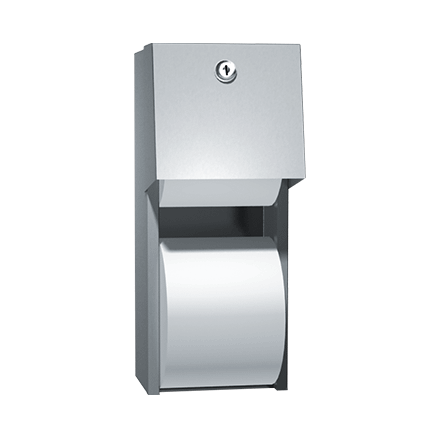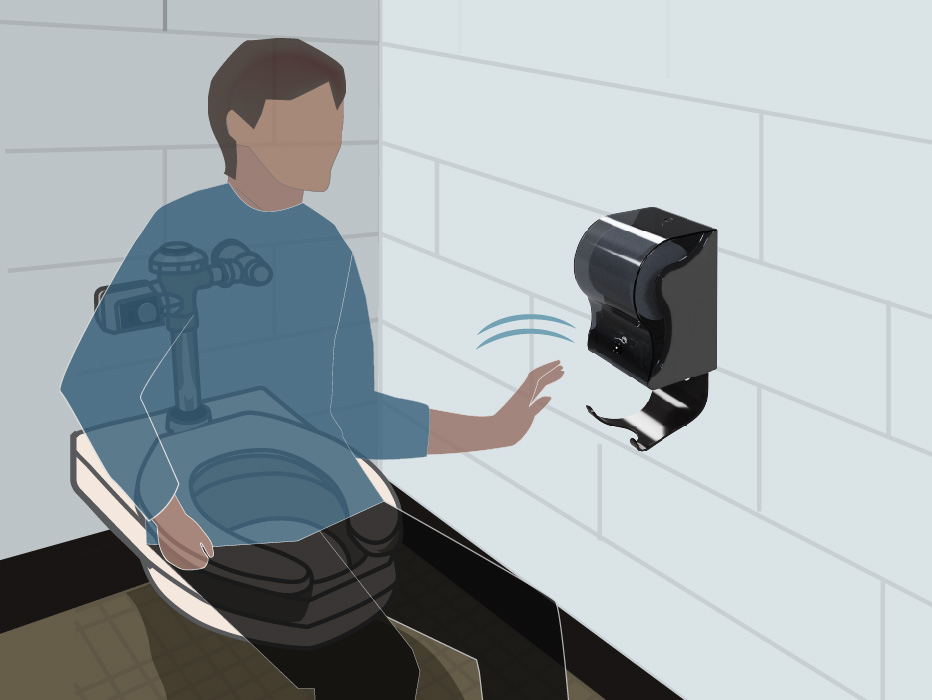In any bathroom, the toilet paper dispenser is an essential fixture that often goes unnoticed until it runs out at the most inconvenient time. This comprehensive guide will provide you with everything you need to know about toilet paper dispensers, including the different types and styles available, how to choose the right one for your needs, installation and maintenance tips, troubleshooting common problems, and more.
Choosing the Right Toilet Paper Dispenser for Your Needs

When selecting a toilet paper dispenser, there are several factors to consider, such as the location where it will be installed, the amount of traffic the restroom receives, and personal preferences. Here are some key points to keep in mind when choosing the right dispenser for your needs:
Capacity
Consider how much toilet paper the dispenser can hold. For high-traffic restrooms, opt for a dispenser that can accommodate larger rolls or multiple rolls to reduce the frequency of refills.
Durability
Choose a dispenser made from durable materials like stainless steel or heavy-duty plastic to withstand frequent use and potential vandalism.
Style
Select a dispenser that complements the overall design and aesthetic of the restroom. Whether you prefer a sleek modern look or a more traditional style, there are plenty of options to choose from.
Cost
Factor in the initial cost of the dispenser as well as ongoing expenses like refills and maintenance to determine the total cost of ownership over time.
Types of Toilet Paper Dispensers

There are two main types of toilet paper dispensers: recessed and surface-mounted.
| Types | Description |
|---|---|
| Recessed dispensers | Installed inside the wall, leaving only the opening for the paper exposed. Common in public restrooms and commercial buildings for added security. |
| Surface-mounted | Mounted on the wall surface, leaving the entire unit exposed. More common in residential bathrooms for easy installation and removal. |
Features to Look for in a Toilet Paper Dispenser

When shopping for a toilet paper dispenser, look for the following features to ensure functionality and convenience:
- Easy to refill: Choose a dispenser with a hinged door or other mechanism that allows for quick and simple refills.
- Locking mechanism: Consider a dispenser with a locking feature to prevent theft and vandalism.
- ADA compliance: If the restroom is accessible to individuals with disabilities, make sure the dispenser meets ADA guidelines for reach and operability.
Installation and Maintenance of Toilet Paper Dispensers
Proper installation and maintenance are crucial to ensuring the longevity and efficiency of your toilet paper dispenser. Follow these tips for installation and upkeep:
- Installation: Secure the dispenser to a stud or solid surface using appropriate hardware to prevent it from coming loose. Follow manufacturer instructions for mounting height and location.
- Refills: Regularly check and replenish toilet paper to avoid running out. Keep spare rolls nearby for quick replacements.
- Cleaning: Wipe down the dispenser regularly with a mild detergent and water to remove dirt and grime. Avoid harsh chemicals that may damage the finish.
Benefits of Using a Toilet Paper Dispenser
Using a toilet paper dispenser offers several advantages, including:
- Improved hygiene: Dispensers protect toilet paper from contamination and moisture, promoting cleanliness in the restroom.
- Space-saving: Wall-mounted dispensers free up counter space and keep toilet paper neatly organized.
- Cost-effective: Dispensers help control paper usage and reduce waste, saving money on supplies in the long run.
Troubleshooting Common Toilet Paper Dispenser Problems
Some common issues that may arise with toilet paper dispensers include paper jams, dispenser jams, and lock malfunctions. Here are some troubleshooting tips to address these problems:
- Paper jams: Gently remove excess paper and check for any obstructions in the dispenser mechanism.
- Dispenser jams: Inspect the dispenser for any debris or foreign objects that may be hindering the movement of the paper.
- Lock malfunctions: If the lock is not functioning properly, contact the manufacturer for replacement parts or repair services.
The History of Toilet Paper Dispensers
Toilet paper dispensers have evolved over the years from simple holders to more sophisticated systems with advanced features. The first patent for a toilet paper roll holder was filed in 1883 by Seth Wheeler, revolutionizing the way toilet paper was dispensed. Since then, various designs and innovations have emerged to meet the diverse needs of consumers and businesses alike.
The Future of Toilet Paper Dispensers
With advancements in technology and sustainability efforts, the future of toilet paper dispensers looks promising. Manufacturers are developing eco-friendly and touchless dispensers to enhance hygiene and reduce environmental impact. Smart dispensers equipped with sensors and connectivity capabilities are also on the horizon, offering automated monitoring and maintenance solutions for public facilities.
Interesting Facts About Toilet Paper Dispensers
- The largest toilet paper roll ever made measured over 9 feet in diameter and weighed more than 4,000 pounds.
- In Japan, some high-tech toilets are equipped with built-in bidet functions and heated seats for added comfort.
- The average person uses about 100 rolls of toilet paper per year.
Conclusion
In conclusion, toilet paper dispensers may seem like a small detail, but they play a significant role in maintaining cleanliness and convenience in restrooms. By choosing the right dispenser, understanding its features, and implementing proper installation and maintenance practices, you can ensure a positive restroom experience for users. Stay informed about the latest trends and developments in toilet paper dispensers to make informed decisions and optimize the functionality of your restroom facilities.